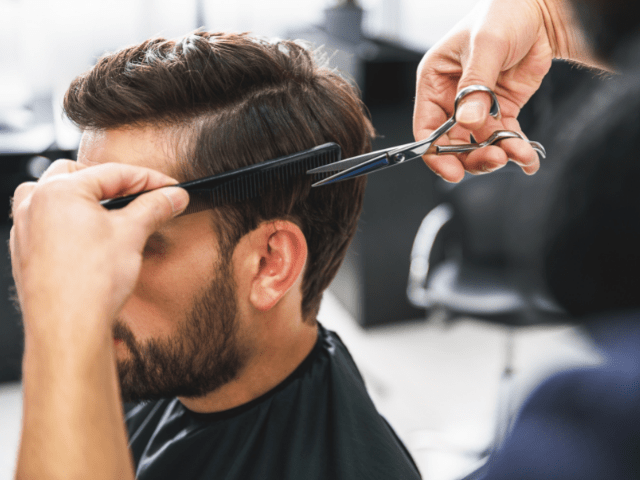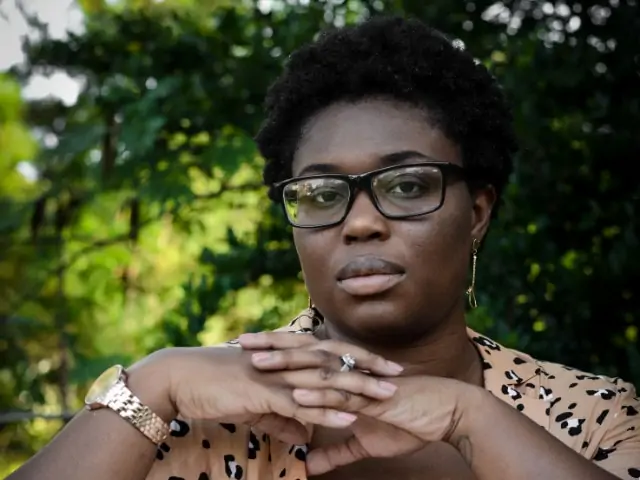The right haircut can take your look from bland to attractive. Your face shape, hair type, and personal preference can influence the kind of haircut you wear. You can also decide to rock different haircuts each season.
Let’s rock it!
Zero fade, bald fade, and skin fade are common haircut styles done by most men. However, most men cannot differentiate between these styles.
You surely do not want to tell your barber one particular style only to get a different one. Therefore, you should know how to differentiate between these styles. This article would help you do just that.
Page Contents
- Main Differences Between Skin Fade vs Zero Fade
- What is Skin Fade?
- Watch This!
- What is Zero Fade?
- Watch This!
- Bald Fade vs Skin Fade: Any Difference?
- Types of Bald Fade Hairstyles
- 0 Fade vs 1 Fade: Any Difference?
- Skin Fade vs Bald Fade: How to Achieve a Fade Hairstyle
- How to Maintain a Fade Haircut
- Conclusion
Main Differences Between Skin Fade vs Zero Fade
The main difference between skin fade vs zero fade cuts are:
- Skin fade blends the hair down to the skin, whereas a zero fade blend leaves a short stubble behind.
- Skin fade requires an electric shaver to achieve smooth blending to reveal the skin, whereas zero fade does not require the use of a dedicated electric shaver.
- Skin fade leaves the baseline and specific part of the head hairless, whereas zero fade does not reveal any hairless skin.
What is Skin Fade?
The hairstyle, Fade, is a very common haircut done by most men. Fade involves a gradual transition from long hair on the top of your head to shorter hair on the sides and back of the head.
Skin fade haircut is a particular type of fade hairstyle that involves hair transition to a skin length, meaning bald skin. However, you can decide the amount of hair you want to be left on the top part of your head, and you can opt for a low, middle, or high skin fade hairstyle.
Watch This!
What is Zero Fade?
Zero Fade is another type of fade hairstyle that involves transitioning from long hair to short stubbles on the sides and back of the head. This means the change goes from long hair and leaving little hair behind.
As the skin fade, you can also decide the amount of hair you want to be left on the top part of your head. The stubble left is usually about 0.4mm long. Thus, giving a fade effect with a less harsh look than the skin fade.
Watch This!
Bald Fade vs Skin Fade: Any Difference?
The difference between skin fade and bald fade:
You have probably heard different barbers throw around “skin fade,” “bald fade” and even “zero fade”. The thing is, both are used interchangeably and can sound confusing. It also leaves you wondering if they're really the same. (You could test this "theory" by telling your barber you'll either get a skin fade or a bald fade and still see the same end result.)
Fun Fact: Skin Fade and bald fade are the same types of haircut, and they mean and describe the same hairstyle effect. This means you end up with the same haircut!
They mean the transition of hair length from long to skin level or bald level.
Types of Bald Fade Hairstyles
1. Low Bald Fade Haircut
This haircut involves the hair on the sides of the head tapered down towards the lower part of the head, within an inch or two of the hairline.
You can also regard this style as a drop fade, and this is because the line drops down behind the ear.
Simply put, the low fade haircut has little hairless skin shown, and this part is usually below the ear. This is a versatile hairstyle, as you can rock it in numerous ways. The top part of the head can be styled according to your preference. You could rock this haircut as:
- Low fade with blowout
- Low fade with a buzz cut
- Low fade with a faux hawk
- Low fade with quiff
2. Mid Bald Fade Haircut
As the name implies, this hairstyle falls between the low and high fade hairstyles. This hairstyle starts at a level between the temples and the ears.
The mid fade haircut gives a transition with equal contrast look, allowing for the perfect balance in any cut.
The mid fade haircut starts its transition from the middle of the head to the lower part of the head. With the clean-shaven buzzed sides, you can rock the upper part of your head in various styles such as:
- Mid Fade with a long top
- Mid Fade with short hair
- Mid Fade undercut
- Mid Fade comb over
- Mid Fade Pompadour
3. High Bald Fade Haircut
This haircut means precisely, as the name implies. The fade starts at or above the temples, and the transition of the hair length begins and ends quite high up the sides and back of the head.
In contrast to the drop fade, the high fade follows a straight line from the hairline around the back of the head. The top part of the hair can be styled as the following:
- High bald fade with taper
- High fade with a crew cut
- High fade with slick back
- High fade with pompadour
Fun Fact: The hair can go about 1 to 1.5 inches down the sides and back of the head.
0 Fade vs 1 Fade: Any Difference?
Oftentimes, the words '0 fade' and '1 fade' get thrown around, and it leaves you wondering if they mean the same as your regular bald or zero fade.
Transitioning from length 0 to 1 fade means going from an extremely short hair length of 1.5mm at the bottom to a length of 3mm at the top.
While this style of haircut might not be your thing, it usually gives a slimming facial effect, thus making it suitable for men with round faces. The fade is usually unnoticeable unless having a closer look.
Skin Fade vs Bald Fade: How to Achieve a Fade Hairstyle
To achieve an excellent fade haircut, it is best to visit a professional barber or stylist. This is because this hairstyle is heavily blended and gradually gets higher towards the top of the head.
Perhaps you want to try it at home; you will need the right hair trimming equipment for the job. You will need a pair of clippers, random guards, a clipper comb, and a blending brush. Then you have to determine if you want a low, mid, or high fade look. You will start by cutting the hair at its shortest at the nape of the neck.
After that, you will increase the guard size and continue cutting, gradually leaving the longest of the hair at the temples. Using a blending brush, you can push the hair down and up to make sure every piece gets blended and cut to the correct length as you work. After you have finished the back and the sides, a clipper comb should be used to blend the top down to the sides effortlessly.
If you want to achieve a zero fade look, then you do not need a shaver or razor. All that is required is a clipper with no guard.
How to Maintain a Fade Haircut
If you have fast hair growth, it should take two to three weeks for the underparts of your hair to grow back, thus making the fade unnoticeable. You can make your fade haircut look fresh by constant touch up. Maintaining a bald fade simply involves re-shaving the skinned area on your head like you’re keeping a clean-shaven beard.
For bald fade vs zero fade haircut, it is easier to deal with the former than the latter.
Zero fades require a more technical approach. It would be best to visit your barber or stylist to help you renew your haircut with a number zero guard or DIY at home.
Dapper Point: If you have curly hair but don't want to trim it off completely, then you might want to try a new style to maintain your curly locks. Read our post to know more -- Curly Hair Buzz Cut.
Conclusion
As you can see, both bald fade and skin fade are the same hairstyles with different names. Thus, you can tell your barber to give you either a bald or skin fade and still end up with the same haircut style.
However, a zero fade is a totally different hairstyle. You shouldn't mistake it for the other zero fade transitions into a short stubble rather than smooth skin.
Therefore, in your next haircut session, when choosing between these styles, it is best to consider your face shape, hair type, and personal preferences. This is because all three affect the overall look you will get afterward,




